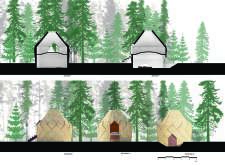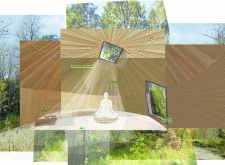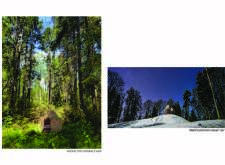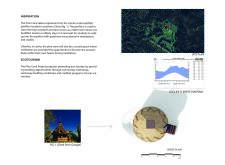5 key facts about this project
At its core, the project serves multiple functions, seamlessly blending residential, communal, and commercial spaces within a cohesive framework. This multifunctionality is a key aspect of modern architecture, addressing the increasingly diverse requirements of urban living. The design promotes interaction and connectivity among occupants, creating a sense of community that is vital in dense urban settings. Important areas within the project are designed to foster social engagement, equipped with versatile communal spaces that can adapt to various activities. This adaptability allows for dynamic use, ranging from casual gatherings to organized events, contributing to a vibrant community atmosphere.
The design features prominently include an open floor plan that encourages easy movement throughout the space and maximizes natural light. This approach not only enhances the living experience but also contributes to energy efficiency by reducing reliance on artificial lighting. Large windows and well-placed openings offer expansive views of the surrounding landscape, further blurring the lines between indoor and outdoor environments. These design techniques emphasize a connection to nature, aligning with the principles of biophilic design that prioritize the well-being of occupants.
In terms of materials, the project employs a balanced mix of concrete, wood, glass, steel, and metal cladding. Reinforced concrete provides a robust structural base, allowing for innovative forms and configurations. The warmth of wood, particularly in the form of glulam beams, invites a sense of comfort and coziness, creating inviting interior environments. High-performance glazing in the windows ensures energy efficiency while fostering interaction with the exterior surroundings. Steel elements contribute to the overall structural integrity and visual appeal, allowing for greater design freedom in the facade and other architectural features. The use of metal cladding serves to enhance the contemporary aesthetic, providing a resilient exterior that withstands the test of time.
Unique design approaches include the incorporation of green technologies, such as rainwater harvesting and solar panels, which reflect a commitment to environmental stewardship. The design also integrates green roofs and living walls, enhancing biodiversity while providing ecological benefits. Such features are essential in contemporary architecture, promoting sustainability and reducing the urban heat island effect.
Throughout the project, attention to detail is paramount. Interior spaces are thoughtfully configured to ensure comfort and accessibility, meeting the diverse needs of its users. Design elements such as flexible furniture solutions enable the spaces to serve multiple purposes, emphasizing the project's adaptability. The incorporation of local culture into architectural motifs further grounds the design in its context, reinforcing a sense of place and identity.
In summary, this architectural project exemplifies the principles of modern design, prioritizing functionality and sustainability while fostering community interaction. Its careful material selection and innovative approaches illustrate the evolution of contemporary architecture in response to urban living. For a more in-depth exploration of the architectural plans, sections, and innovative design ideas that bring this project to life, readers are encouraged to review the project presentation. It offers valuable insights into the thought processes and methodologies that shape this compelling piece of architecture.


























